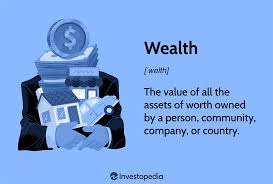Social media influencers monetised their platforms as personal brands offering income opportunities where their following becomes a revenue stream. With billions of users checking out influencers on Instagram, TikTok and YouTube in 2025, creators are taking advantage of monetisation strategies with maximum reach and audience engagement. What they're making today.
1. Sponsored Post & Brand Partnerships
- How It Works: Brands work with influencers to create content reaching their followers, paying them to do so. That could be product placements, endorsements or promotional videos.
- Why It's Effective: Followers trust recommendations of influencers, which yields high engagement and marketing effectiveness.
- Earnings Potential: Payments are made for reach/engagement: a couple hundred to thousands per post. Some of the biggest influencers command six figures for big campaigns.
2. Affiliate Marketing
- How it Works: Influencers link to products and make commissions on sales through them.
- Why It's Effective: Affiliate marketing is a passive income stream - especially in fashion, beauty and tech where recommendations count.
- Earnings Potential: Commissions vary between a few dollars and thousands per month based on demand and follower engagement.
3. Selling Personal Merchandise
- How It Works: So lots of influencers create branded merchandise - clothes, accessories or lifestyle products - that they flog to followers.
- Why It's Effective: The merchandise helps fans connect with the brand and extends the brand.
- Earnings Potential: For influencers with big followings, merchandise sales can be very profitable if marketed well.
4. Digital Products & Online Courses
- How It Works: Influencers turn knowledge into e-books, courses, or workshops. Fitness influencers might sell workout plans or offer industry courses.
- Why It's Effective: Digital products have low overhead and high scalability - an ongoing passive income stream.
- Earnings Potential: Pricing and follower interest may drive launches to tens of thousands or a few thousand per sale cycle.
5. Subscription Platforms & Exclusive Content
- How It Works: Platforms like Patreon and OnlyFans have followers pay for access to extra content like tutorials or behind the scenes extras.
- Why It's Effective: Subscription models create recurring revenue while retaining loyal followers.
- Earnings Potential: Subscriptions are normally USD 5 to USD 50 per month, and total earnings are determined by subscriber numbers and content exclusivity.
6. Youtube Ad Revenue
- How It Works: YouTube partners pay Influencers money to advertise on their YouTube videos.
- Why It's Effective: This direct platform monetization gives a regular income stream to creators of regular contents.
- Earnings Potential: The earnings are variable depending on view count and cost-per-thousand (CPM) rates range between USD 1 and USD 10. The large channels that receive millions of views receive very good monthly revenue.
7. Roles Of Brand Ambassador
- How It Works: Brand ambassadorships are ongoing promotions and representations of a brand, unlike one-off partnerships.
- Why It's Effective: Ambassadorships provide steady income and gives the influencer credibility with the brand and their followers.
- Earnings Potential: Ambassadorships receive retainers or annual contracts for income ranging from several thousand to six figures per year depending on reach and campaign size.
8. Crowdsourcing & Donations
- How it Works: Platforms like Buy Me a Coffee or Ko-fi let followers donate to creators that depend less on sponsorships'.
- Why It's Effective: Crowdfunding allows direct fan support - popular with artists, educators and activists.
- Earnings Potential: Even small individual donations can add up to supplemental income over time.
9. Livestreaming & Virtual Events
- How It Works: Influencers leverage live platforms akin to Instagram, YouTube and Twitch for virtual occasions, incomes by way of live donations, sponsorships or ticket sales.
- Why It's Effective: Livestreaming creates real-time interaction, community & engagement.
- Earnings Potential: Influencers make cash via donations, sponsorships or pay-per-view events based on event size and viewer participation.
10. Dealing in Investments & Equity
- How It Works: Influencers might purchase into or get equity in startups or brands that they promote, profiting from long term results of a company.
- Why It's Effective: Equity links influencer incentives to brand success - potentially long-term earnings.
- Earnings Potential: Returns vary widely but are large if the brand or startup performs well.
11. Podcast Advertising & Sponsorships
- How It Works: Influencers monetise podcasts via ads and sponsorships in an inherently intimate format.
- Why It's Effective: Podcast listeners are engaged - ads work. Brands pay for ads and sponsorships on high-traffic shows.
- Earnings Potential: Larger podcasts make hundreds to thousands of dollars per episode in sponsorships and ads.
12. Writing books/e-books
- How It Works: To reach more influencers some even publish books about topics related to their niche: fitness or entrepreneurship being popular ones.
- Why It's Effective: Books build credibility and reach; digital publishing makes self-publishing flexible.
- Earnings Potential: Traditional publishing may bring advances; self-published e-books bring royalties. Successful books can generate large passive incomes.
In 2025, social media influencers have varied revenue streams because of this. From partnerships and subscription models to actually creating products, there are multiple income streams that influencers today have the resources to build. Influencers who adapt to trends and try different ways to make money can build stable long-term revenue which extends beyond traditional sponsorships, perhaps indicative of the influencer economy and opportunities for creators in the digital era.






